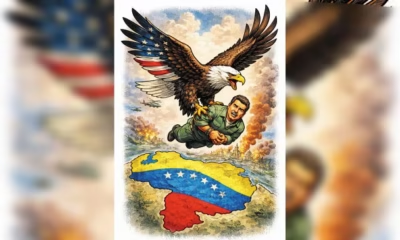
|
Getting your Trinity Audio player ready...
|
(The article was originally published by Indian Express on May 26, 2023 and in the print edition on May 29,2023. Views expressed are personal.)
By now, the people of India have become familiar with the extensive history of “Sengol”, the sacred sceptre. Once a part of the regalia of royalty in the ancient West, it became a symbol of the exchange of royal power during the five-century reign of the Cholas of Thanjavur in Tamil Nadu, who established a massive kingdom after defeating the Pallavas and Pandyas.
The Rajaguru, court priest, would use it as a symbol to notify the transfer of power from one Chola king to the other. A ritual was associated with it to inform the kings that they received the authority from a higher authority in the heavens through the sacred Sengol.
In the West, the sceptre has been a part of royal regalia right from the time of the Greek and Mesopotamian civilisations. In countries like Norway, Sweden and the UK, the royal sceptre is still in vogue. It was seen as recently as in September 2022 when it was placed on the coffin of Queen Elizabeth II, and again earlier this month in the hands of King Charles at the time of his coronation.
In the Indian civilisational tradition, monarchs and kings were never considered as the supreme authority. Irrespective of whatever regalia were used, like crowns or sceptres or orbs, the royals were always reminded by the court priests at the time of the coronation that Dharma, the ethical-spiritual order, is the only supreme authority.
As per the Indian coronation rituals, the king, after formally ascending the throne, would proclaim three times: “Adandyosmi”, nobody can punish me. The priest would then come forward with his sacred sceptre, Dharma Danda, gently pat on the king’s crown and proclaim three times that “Dharma Dandyosi” — meaning “Dharma will punish you”.
The Sengol represented that tradition of the Dharma Danda. In 1947, it did not merely symbolise the transfer of power from the British to Nehru. Power was first taken over from Lord Mountbatten through a ritual by Srila Sri Kumaraswamy Thambiran, the second in command of the Thiruvaduthurai Adheenam in Mayiladuthurai in Tamil Nadu who brought the specially designed Sengol with him for that purpose.
The Adheenam’s records state “Sadaiyapa Swami gave the Sengol to Mountbatten and got it back from him and sprinkled holy water on it, invoked the divine name and gave it to Pandit Nehru, blessing him to assume power”.
While handing over the Sengol to Nehru, the priests sang verses from Kolaru Pathigam, hymns from the Thevaram composed by Tamil Shaivite saint Thirugnana Sambandar. The verse ended with the statement “Adinargal Vanil Arasalva Anai Namade” — meaning, “it is our order that the follower of the lord, the king, shall rule as in the heavens”.
The Sengol is back in the news thanks to Prime Minister Narendra Modi’s decision to install it in the new Parliament building next to the Speaker’s podium. The 1947-vintage silver Sengol coated with gold, lying in Ananda Bhavan Museum in Prayagraj, is being brought back for the purpose.
Unfortunately, the historic occasion is marred by the intransigence of some Opposition parties. Their insistence that the prime minister has no authority to inaugurate the new parliament is facile. The Sengol, representing transfer of power to Indians, was received by Jawahar Lal Nehru as the prime minister in 1947, even though the president of the Constituent Assembly, Rajendra Prasad, was standing next to him.
Prime ministers do not represent their parties alone, but the whole country. Parliaments represent the political authority of the country, and the prime minister leads that authority.
Questions are being raised over the authenticity of the story around Sengol. Besides the photographs of Nehru receiving the Sengol from the priests, there were reports in the international media like Time magazine that vividly narrated the incident. “Even such an agnostic person as Jawaharlal Nehru, on the eve of becoming India’s first Prime Minister, fell into the religious spirit”, commented Time, adding “… they (priests) entered the house in dignity fanned by two boys with special fans of deer hair. One sanyasi carried a sceptre of gold, five feet long, two inches thick. He sprinkled Nehru with holy water from Tanjore and drew a streak in sacred ash across Nehru’s forehead. Then he wrapped Nehru in the pithambaram and handed him the golden sceptre”.
A prominent national daily later published a report with the title “Mutt’s tryst with destiny 15 minutes before freedom”, giving out the details of the ceremony. “… around 11.45 PM, minutes before India got its independence, the delegation presented Nehru with the sceptre in the presence of Rajendra Prasad and other leaders”.
As Sengol reaches the new Parliament house its real significance as the Dharma Dand — the Indian civilisational tradition of ethical-spiritual authority over mere political authority — must be the point of debate rather than the nitpicking over its historicity.




